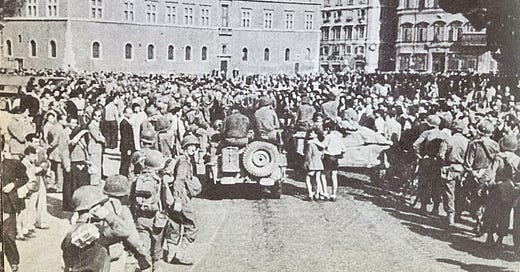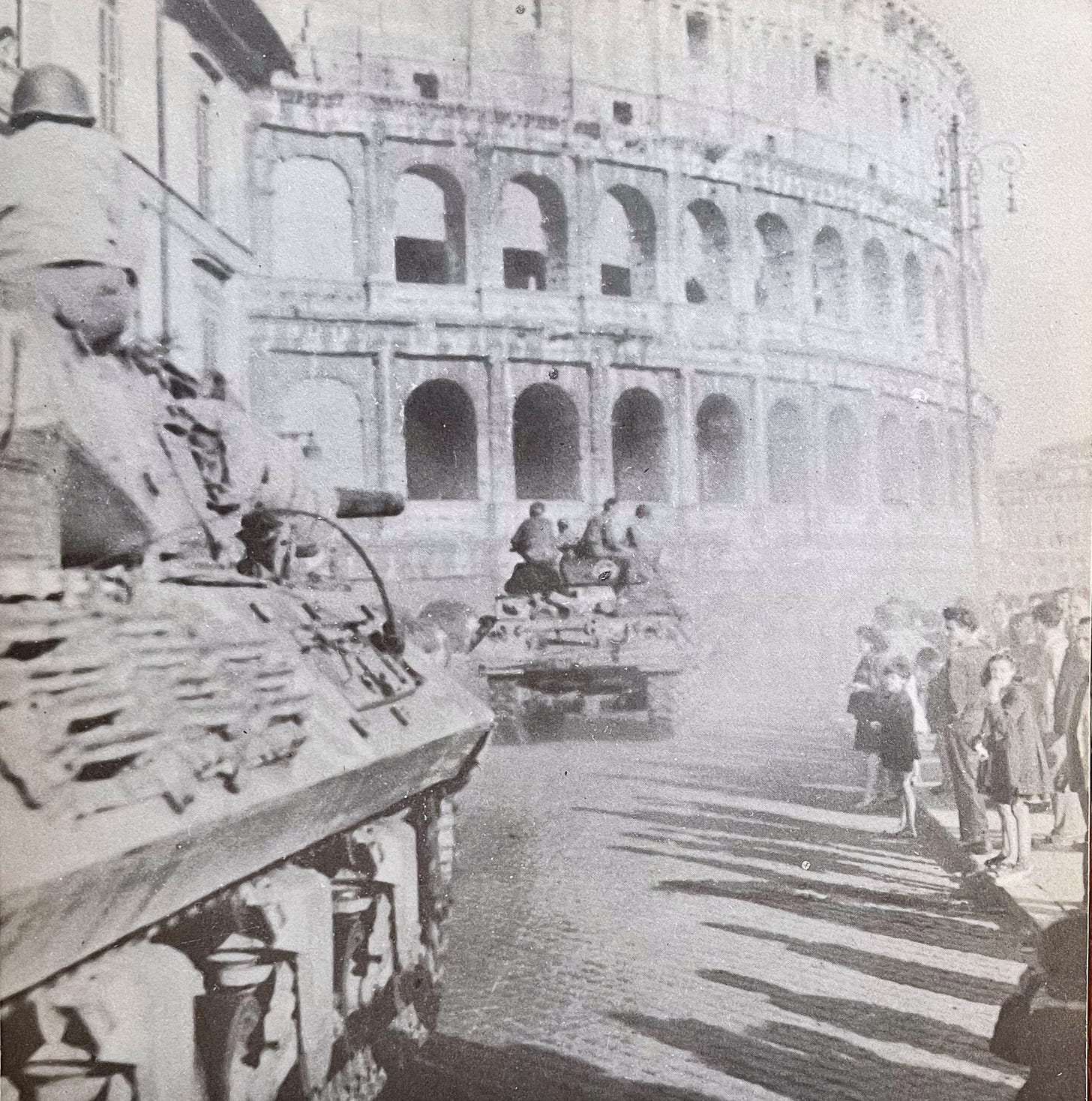In Italy, the Festa della Liberazione (Liberation Day) is celebrated on April 25, so many people (even Italians) don’t realize that this week marks the 80th anniversary of the liberation of Rome from Nazi German occupation. On June 2, the country celebrated the Festa della Repubblica (Republic Day), which commemorates the 1946 referendum that ousted the monarchy and transformed Italy into a republic. I was at Piazza Venezia with my family—currently visiting from the U.S.—and my friend Elisa Valeria Bove, CEO of Roma Experience, to watch the military planes flying overhead streaming the colors of the Italian flag, despite the rain.
There were a few modest ceremonies but no parades to commemorate the anniversary of the day the Allied troops led by General Mark Clark of the U.S. Fifth Army marched into Rome and liberated the city from German occupation on June 4, 1944. My grandfather, Ira Itzkowitz, was one of the American soldiers who marched into Rome that day. I won’t get too deep into the story here, but stay tuned because my family and I spent the past week retracing his steps from Salerno up to Rome and I’ll be reporting on it for a feature in an upcoming issue of Hemispheres.
“During the night Division troops mounted armor and trucks, formed in a column and moved boldly through the silent, moonlit streets through the heart of the city. At daybreak, the Tiber was crossed and the column headed out past the Vatican into the open country to the north,” The Fighting 36th: A Pictorial History of the Texas Division in Combat recounts. Nine months of the brutal German occupation of Rome had finally come to an end following bloody battles in Salerno, Naples, Montecassino, Anzio, and other towns throughout Italy.
“In Rome itself, the people have been celebrating. Shops have closed and huge crowds have taken to the streets, cheering, waving and hurling bunches of flowers at the passing army vehicles,” the BBC reported on June 5, 1944. “First reports from the city say it has been left largely undamaged by the occupying German forces.”
It’s hard to imagine now what the city would have been like then, but there’s no doubt that people were scared and life was hard. That same BBC article reported that bread was rationed to 100 grams per person per day. While reporting my upcoming feature, I visited the Museo Storico della Liberazione, which is housed in the notorious jail on Via Tasso where the S.S. tortured prisoners to try to get them to speak. There I saw one of the ordinances signed by Kesselring that were posted around the city, which declared Italy an occupied territory and stated that saboteurs and traitors would be shot.
Meanwhile, the Allied troops were battling German troops under horrendous conditions in the months leading up to Rome’s liberation. I’m still processing all the information I learned this week and gathering my thoughts, but I didn’t want to let the anniversary pass by without acknowledging it. If you have personal stories about what Italy was like during the Second World War, please send them my way.
Further Reading
You can read the aforementioned BBC article from June 5, 1944 here.
In case you missed it, last October I dedicated issue #54 of this newsletter to commemorate the 80th anniversary of the raid on Rome’s Jewish Ghetto.
You can read more about the 80th anniversary of the liberation of Rome in this article published by Wanted in Rome.
You can read all about the Festa della Repubblica in this article for Italy Magazine (for premium subscribers).
Elisa led me and my family on a tour of Via Rassella (the site of an attack on German troops by the partisans) and the Jewish Ghetto in connection with my feature for Hemispheres. Check out my interview with her here.







Read "How Much Do You Know About The Liberation of Rome?" by clicking at https://tinyurl.com/mt2bj2kc.
Thanks for writing this one. As a son of the captain of the 337th Regiment of the 85th Division, I would like to know what military unit your grandfather served with.